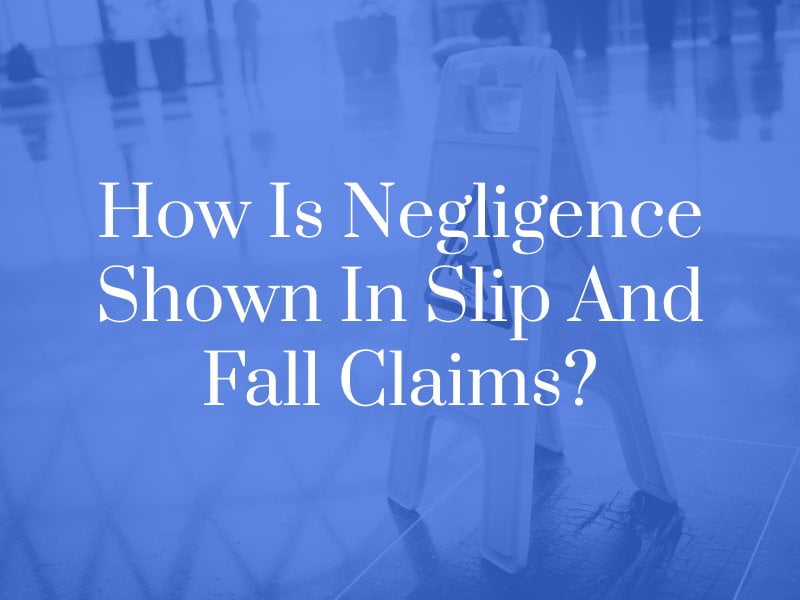How is Negligence Shown in Slip and Fall Claims?
February 20, 2020 in Blog
A slip and fall injury on someone else’s property does not automatically mean the property owner is legally responsible. Although New York property owners owe all visitors a duty of reasonable care, negligence, or a breach of that duty which caused the injury, must also be proven.

How To Prove Negligence
Showing a property owner’s negligence can be difficult as it requires proof that either the dangerous condition was either caused by or known to the owner, and nothing was done to fix it. Alternatively, and a very commonly litigated issue, is when the owner should have known of the hazard’s existence, since a reasonable property owner would have found and fixed the issue before anyone could be hurt by it. Additionally, successfully proving negligence means establishing the following four elements in your slip and fall claim:
Duty
The property owner owed you a duty of care to keep their premises safe, as long as you were a permitted visitor. Except for in very limited circumstances, trespassers are not owed any duty of care.
Breach
The property owner failed to exercise reasonable care in keeping their premises safe, in that they knew, or should have known, that the dangerous condition existed for a sufficient period of time before to the accident occurred.
Causation
Involves proving that the owner’s failure to maintain the premises in a reasonably safe condition was a substantial factor in causing the accident and resulting injuries. .
Damages
Involves proof that the victim sustained damages (losses) after suffering the injury caused by the property owner’s negligence. This includes both monetary and intangible losses such as:
- Medical expenses: including doctor’s fees, medications and treatments, future medical expenses such as continuous medication, rehabilitation, in-home care and even corrective surgery.
- Lost income due to missed hours of work or lost job.
- Emotional distress
- Mental anguish
- Pain and suffering
Only when the property owner’s negligence can be shown to have caused your injury, will you be able to obtain compensation.
Notice in a Slip and Fall Case
The idea that an owner “knew or should have known” of a dangerous condition on their property is the concept of notice. This is a critical issue in slip and fall cases, as only when a property owner is aware, or should have been aware, do they have a duty to remedy the hazardous condition. There are two types of notice:
Actual Notice
When there is evidence that a property owner was aware of a dangerous condition because they either created it, observed it directly, or were notified about it. Evidence can include a letter written by a tenant or patron informing the owner of the condition, inspection documents mentioning it, or a previous accident report claiming the hazard as the culprit for an injury.
Constructive Notice
Evidence that the property owner should have been aware of the dangerous condition, even though they did not directly observe it and were not specifically told of its existence. This can occur if it can be demonstrated that the hazardous condition existed on the property sufficient period of time such that the owner should have discovered it through the exercise of ordinary care in inspecting the property and/or performing regular maintenance. For instance, a sidewalk pushed up by tree roots takes two to three years to occur, which means an owner would have plenty of time to remedy the situation before a trip and fall accident happens. Additionally, constructive notice may be proven if the condition that caused the injury was recurring. For instance, improperly installed gutters that cause water to pool on the ground, which can then freeze.
Speak to an Experienced New York Slip and Fall Lawyer
Before filing a slip and fall claim, know that the property owner will likely argue that you share some amount of blame for your injury. This can potentially result in a reduced settlement. Let us evaluate your case for free, so we may advise you on how we can obtain you the maximum amount of compensation. Reach us online or by calling (212) 732-9000.